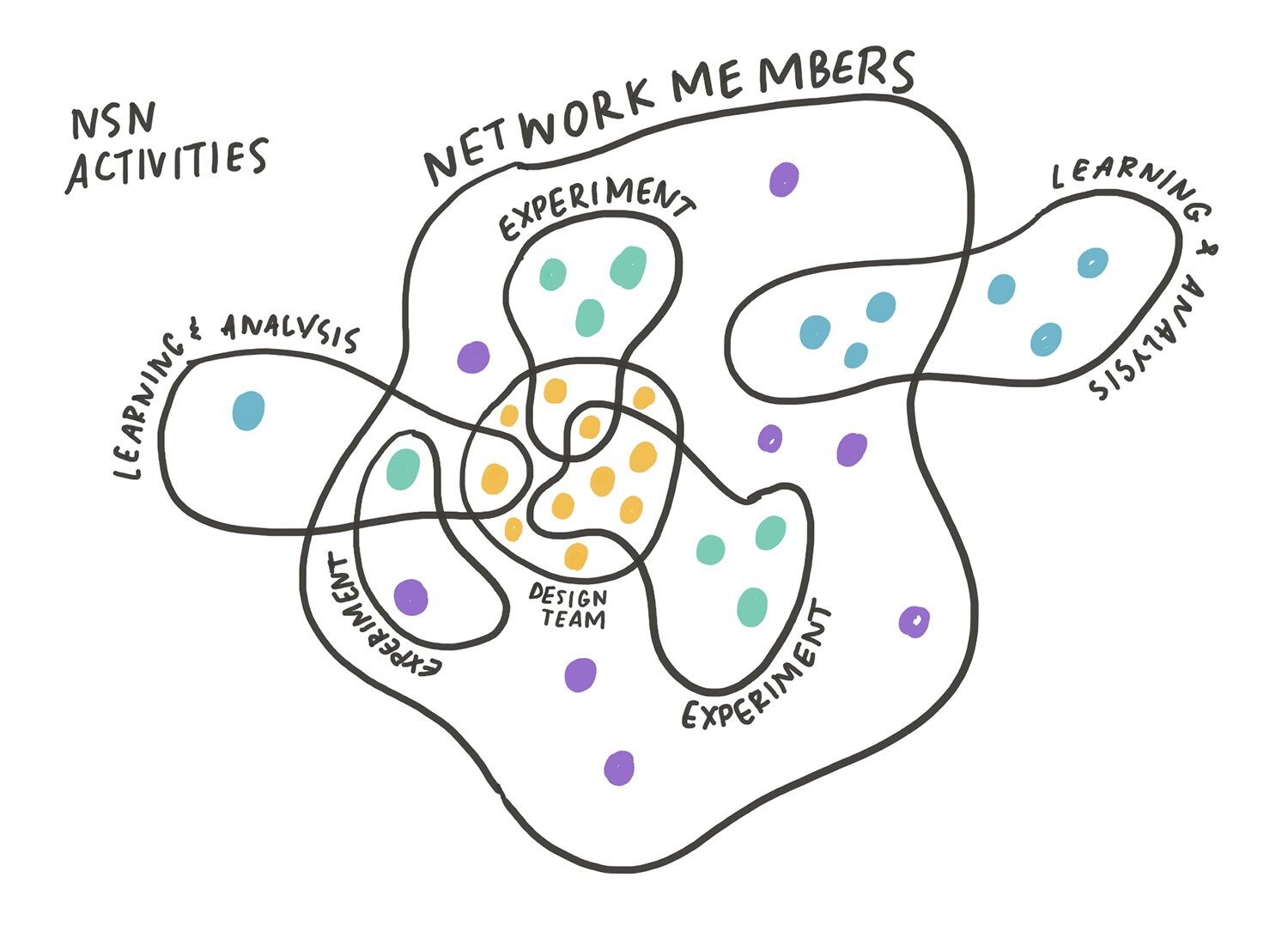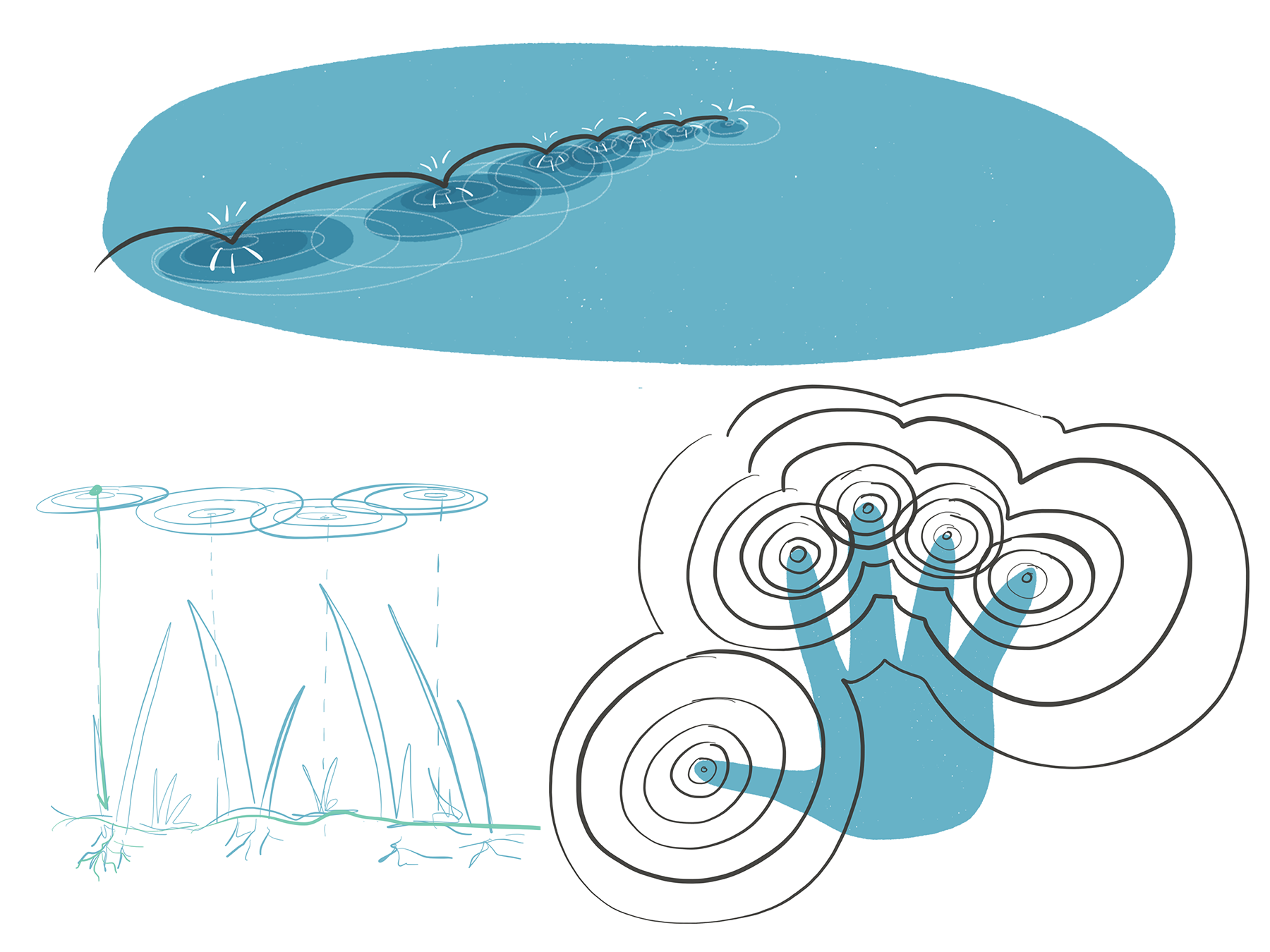Northstar Network
Client: Social Transformation Project
Collaborators: Eugene Eric Kim, Change Elemental
• strategy • visual facilitation • storytelling • visual language development •
From 2017–2019 worked with the Northstar Network, a group focused on building long-term power for the progressive movement. The network is actively defining and practicing a new way of working, built on trust and shared feminist organizing principles, that will help unite organizations across progressive issue areas (e.g. climate, women, labor, native organizing, etc), and create a shared vision for the future.
The network is supported by a fantastic team of facilitators and organizers at the Social Transformation Project and Change Elemental, as well as other independent contractors. Much of the work integrates Adrienne Maree Brown’s Emergent Strategy practices and Faster than 20 collaboration practices.
This work takes shape in many digital and analog forms, including large graphic visuals used in network meetings as conversation launching points
Designing Great Meetings
The full network (made up of executive directors and leaders of 10+ progressive organizations) convenes 2-3 times a year to do intense connection, reflection, and strategic planning. The content is driven by a design team— a group of self-selected network members who play a role in defining the direction of the group in addition to participating— with planning, logistics, and facilitation support from STP and Change Elemental. My role as visual storyteller requires involvement before, during, and after each gathering— primarily to develop visual artifacts that reflect the values, vision, concepts, and conversations that are present for the group at the time.
When we are stuck, we draw!
I’ve learned that in this type of work we need to intentionally break the behavioral patterns of the past in order to move deeper in our shared ideas and visions. One example I can offer for how this works in practice: during a meeting long ago the group was struggling to come to agreement on exactly what it means to “center marginalized communities” in our work. We believe this is an impasse; if the group is not clearly on the same page about what this means and looks like in practice, we won’t be breaking old behavioral patterns when it really matters….so let’s break our behavioral pattern of talking ourselves blue in the face and put pen to paper. What does it LOOK LIKE to you?
Enter one of my favorite activities: a “shitty first draft” party. Each leader was given a small whiteboard and we did three rounds of drawings to define the words that were clearly interpreted differently among the group. After each round of drawing, each person shared their drawings and then we did a short group reflection. The next round builds on the first, you are encouraged to borrow, steal, and build upon other’s work. By the third round, a lot of the drawings start to look the same, which indicates we are arriving at a visual that resonates across the board!
During the conversations, I synthesize what is being said on my iPad. At this point it felt like we were getting stuck on the various interpretations of different words
To break through the language challenge, we did three rounds of “Shitty first drafts” to visualize what we feel and imagine the words to mean in the context of the network and how it operates
I translated each drawing onto one page and grouped them by theme to determine what metaphors and models were most frequently referenced.
THe group agreed that the concept of intersecting ripples best illustrated the term “relationality” which eventually became a network value. I turned the first drafts into second drafts, and we agreed on the hand image as our representation of the concept,.
Visual Models for one-on-one Conversations + Focus Groups
A focal point for another convening was to identify transformational cross-movement opportunities (e.g. Green New Deal). In order to hit the ground running once the group assembled in person, we facilitated a series of virtual conversations prior to the meeting. The goal was to conduct at least 8 focus groups and have a list of ideas to review at the start. The challenge was to allow organic conversations to take place at any level of detail, and then to synthesize what we heard in a way that makes sense of the vastly different ideas. After a few conversations, it was clear we needed a visual model to organize all of the ideas— some were very broad, and others were tactical. This framework translated well into the group setting and allowed people to identify what level of conversation actually qualifies as an opportunity, and what ideas are connected on different levels.
We introduced this framework at the beginning of each conversation, but let the discussion evolve organically and translated what we heard into this template.
We synthesized the findings and brought a summary of every opportunity to the next in-person convening, where participants were able to see which ideas had the most support and energy, as well as which ones warranted further exploration.
Building a SHARED Visual Language
Between each convening we facilitate regular virtual conversations to further develop the shared analysis. A conversation could be focused on the WHAT or the HOW of the work, and my role is to help generate visuals in the moment that clarify what people are saying to guide us toward more specific and explicit ideas. Below you can scroll through some of my favorite images that are now anchors for group conversations.














The values of the group are on display at every meeting— this is an early version of the imagery for each
Training and Development
The practices of synthesis, artifact creation, and storytelling are recognized by STP leadership as essential to any role and level of involvement with the network. Recently, I have shifted in my role to be more of a coach and advisor to other practitioners. We have conducted a full day visual story workshop, and have regular one-on-one meetings to coach specific skills that this work requires. This new role has also inspired me to document a number of tactical best practices (supplies, taking photos, editing photos) that will help any collaboration or storytelling practitioner interested in adding this to their toolkit.












